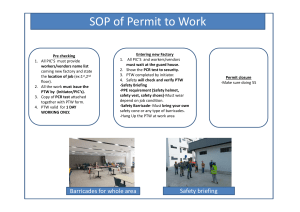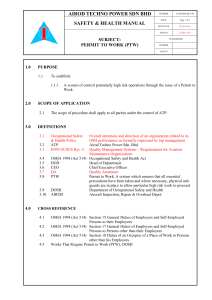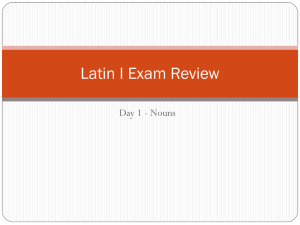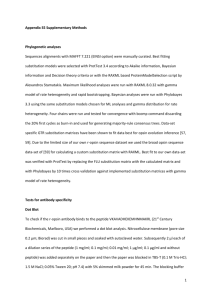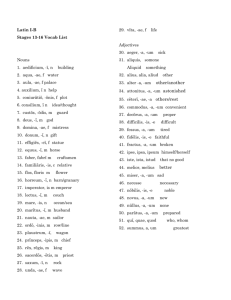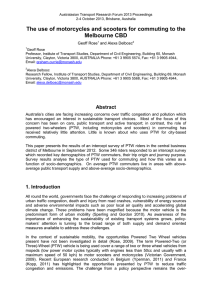pwpfwpfwpfwpfwpfwpfwpfwpfwpfw
advertisement
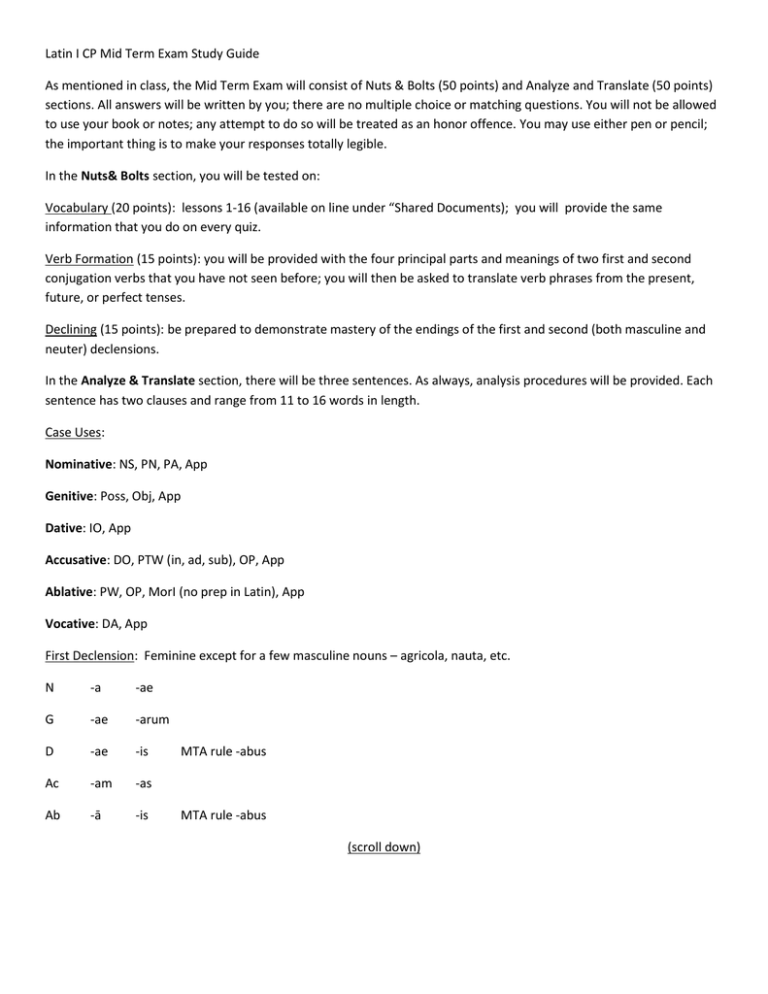
Latin I CP Mid Term Exam Study Guide As mentioned in class, the Mid Term Exam will consist of Nuts & Bolts (50 points) and Analyze and Translate (50 points) sections. All answers will be written by you; there are no multiple choice or matching questions. You will not be allowed to use your book or notes; any attempt to do so will be treated as an honor offence. You may use either pen or pencil; the important thing is to make your responses totally legible. In the Nuts& Bolts section, you will be tested on: Vocabulary (20 points): lessons 1-16 (available on line under “Shared Documents); you will provide the same information that you do on every quiz. Verb Formation (15 points): you will be provided with the four principal parts and meanings of two first and second conjugation verbs that you have not seen before; you will then be asked to translate verb phrases from the present, future, or perfect tenses. Declining (15 points): be prepared to demonstrate mastery of the endings of the first and second (both masculine and neuter) declensions. In the Analyze & Translate section, there will be three sentences. As always, analysis procedures will be provided. Each sentence has two clauses and range from 11 to 16 words in length. Case Uses: Nominative: NS, PN, PA, App Genitive: Poss, Obj, App Dative: IO, App Accusative: DO, PTW (in, ad, sub), OP, App Ablative: PW, OP, MorI (no prep in Latin), App Vocative: DA, App First Declension: Feminine except for a few masculine nouns – agricola, nauta, etc. N -a -ae G -ae -arum D -ae -is Ac -am -as Ab -ā -is MTA rule -abus MTA rule -abus (scroll down) Second Declension Masculine: two kinds, ending in –us or –r -us Masculine -r : vir, viri -r: ager, agri (note base is agr-) N -us -I vir viri ager agri G -I -orum viri virorum agri agrorum D -o -is viro viris agro agris Ac -um -os virum viros agrum agros Ab -o -is viro agro viris agris Sevond Declension Neuter: remember the neuter rule! N -um -a G -I -orum D -o -is Ac -um -a Ab -o -is Remember that an adjective has the same case, #, and gender as the noun that it modifies, but not necessarily the same ending. Verbs: 1st & 2nd Conjugation; Present, Future, and Perfect Active Amo, amare, amavi, amatus Video, vidēre, vidi, visus To form present and future, take the-re off the 2nd principal part and add endings. Amo amamus video videmus amabo amabimus videbo videbimus Amas amatis vides videtis amabis amabitis videbis videbitis Amat amant videt vident amabit amabunt videbit videbunt To form the perfect tense, take the –I off the 3rd principal part and add endings Amavi amavimus Amavisti amavistis Amavit amaverunt (scroll down) Prepositions: Only the following prepositions are used in Place Constructions; all other prepositions (at this point) simply cause an OP. Accusative Case PTW PTW PTW PTW PTW PTW PTW PTW PTW PTW Ablative Case PW Ablative Case PFWPFWPFWPFWPFWPFWPFWPFWPFW in = into, onto in= in, on a(b)= from ad = to, toward sub=under de* = down from sub=under e(x) = out of *when de means about or concerning, it causes simple OP Genitive Sandwich: don’t forget that prepositions can provide the framing necessary for the genitive sandwich: In agricolae agris = “In the farmer’s fields” or “in the fields of the farmer” The other type of genitive sandwich is ADJ/GEN/NOUN MODIFIED: magnus agricolae ager “the large field of the farmer”
